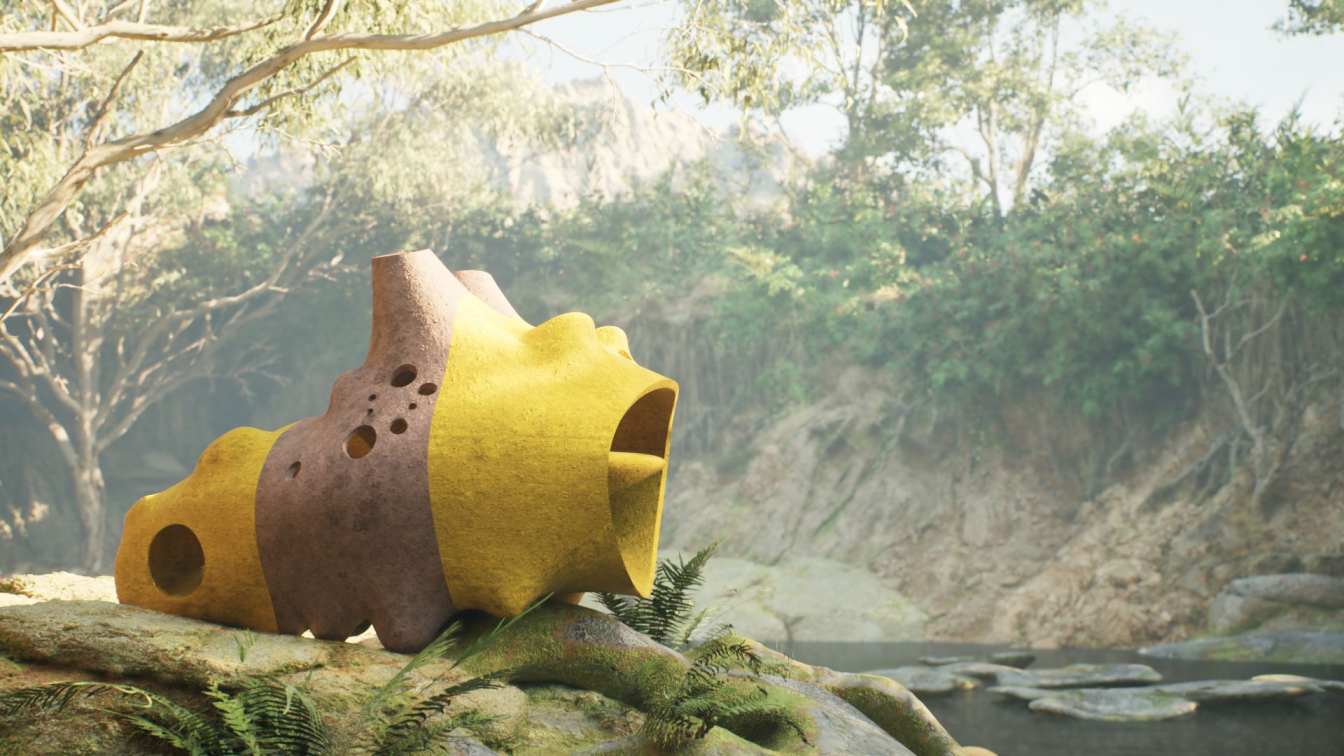Inspired by natural forms and tracing back to the very roots of architecture, ZOO Architects have taken organic materials such as rock, earth, and hay to create houses specifically tailored to the scale and needs of otters based on a deep knowledge of their preferred environments, social behaviour, diet, and cognitive abilities. The result is a complex, fascinating group of biomorphic housing prototypes.
Groups
Otters are social animals that usually live together and form family groups. Otters often sleep holding hands, which is a manifestation of their social behavior. They often live together in families or groups, typically consisting of a pair of adult otters and their offspring. They communicate with each other through sounds, postures, and odors. The behavior of sleeping hand-in-hand usually occurs among family or group members, helping to strengthen their bonds and trust.
Family
Otters practice monogamy, which means they have a firm belief in loyalty to their life partners despite their appearance of being somewhat foolish.They will store enough food inside their nests to prepare for unexpected needs.
Behavior
Otters are very intelligent and agile in their daily lives. They can use stones to knock on shells to open them, allowing them to eat the soft-bodied animals inside. This behavior is considered a form of tool use, which is a rare occurrence among non-human animals. In addition, otters are very clean animals and often use their front paws to groom and clean their fur, keeping it dry and waterproof. Sometimes, otters catch fish not just for food, but also as a hobby. They will carry the caught fish ashore, lay them out one by one on the ground, and then turn around to catch more, simply for the fun of it. They enjoy playing in the water and often engage in activities such as chase games, diving, and fishing.

Clever
Otters enjoy throwing one or multiple small stones into the air with their paws and mouths, and then catching them again, repeating this cycle repeatedly. Some otters even use the same stone throughout their lifetimes. When not in use, they hide their dedicated stones in the pouch-like skin on their forelimbs and occasionally take them out to juggle. Scientists speculate that playing with stones is a way for otters to practice their skill of using stones, as they use them to crack the shells of crustaceans or mollusks when feeding.
Environment
Otters are able to adapt to a wide range of environments, including rivers, lakes, marshes, and oceans. They typically prefer freshwater habitats with slow-moving water, high water clarity, sparse aquatic vegetation, and an abundance of fish, especially small streams with lush tree coverage along their banks. As top predators and key species in freshwater and coastal ecosystems, the presence of otters is an important biological indicator of environmental health.
Therefore, by designing suitable habitats for otters, we can not only protect the natural environment, but also take the opportunity to deeply reflect on the meaning of human architecture. It also makes us realize that architecture is not merely a product that satisfies human needs, but also a form of respect for nature and life.

WELFARE DECLARATION
From Natural Habitats, Human Living Patterns Have Evolved From Cave Dwellings, Wooden Structures, Stone Buildings, Concrete Structures, and Gradually Progressed To 3D-Printed Materials for Habitation. With the Development of Civilization, We Believe That the Environment and Architecture Influence Human Behavior. As Highly Intelligent Mammals, Darwin Proposed and Emphasized the Concept of the Biosphere Community in "on the Origin of Species."also,In China, about 2,400 years ago, Zhuangzi stated in his "Equality of Things" : "Heaven and the earth live together with me, and the myriad things and I are one." Zhuangzi believed that all things are closely connected, and there is no fundamental distinction between them. He viewed them as mutually dependent existences. Grasping the relationship between man and nature is beneficial for understanding the ethical relationship between man and nature, as well as between the subject and the object. Based on This, We Believe That all Animals Should Have the Autonomy To Choose, Modify, and Optimize Their Habitats. Designing Habitats for all Beings and Providing a Foundation for the Natural Civilization of the Next Generation Is our Primary Welfare Standard.
Graham Harman is one of the most respected contemporary thinkers and philosophers in academic circles. His "Object-Oriented Ontology" aims to rethink our relationship with the world and our understanding of existence. Architecture becomes more compelling and powerfully expresses itself when human pursuits transcend the satisfaction of basic needs and begin to seek rich experiences. Architecture, in itself, is an artistic form. These spiritual forces are hidden in faith, hope, and desire, pursuing the light and the desire to "build" with higher ideals.
From Barter Systems, Metal Currency Transactions, Paper Currency Transactions to Digital Currency Transactions, the Era of "Carbon" Currency Transactions and "Natural" Currency Transactions Is Approaching. Animals and Their Corresponding Natural Boundaries Will Be our New Principals. We Urge Architects To Explore New Avenues of Animal Representation and Material Development While Focusing on the Residual Value of Cities.


















